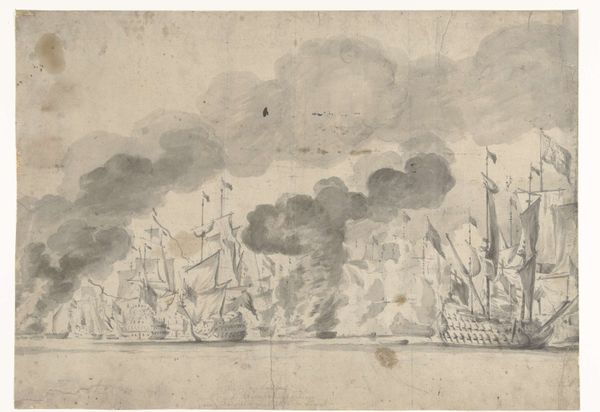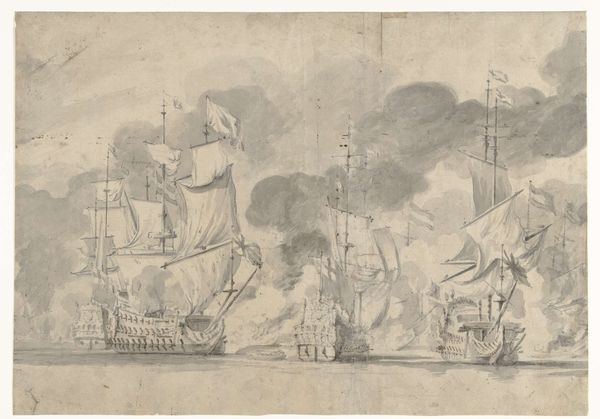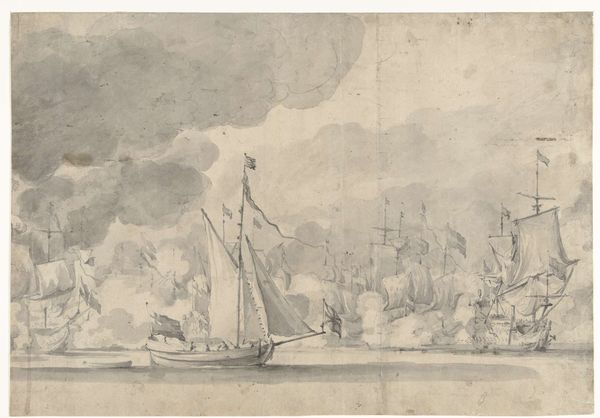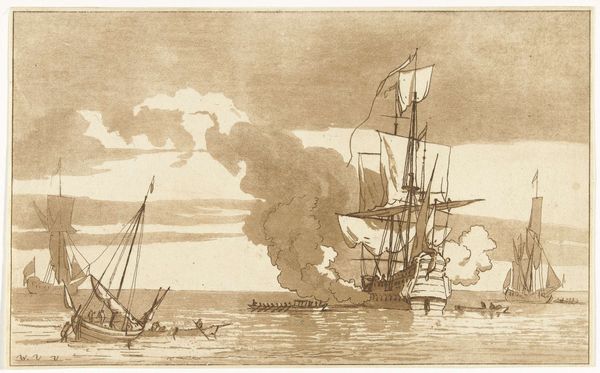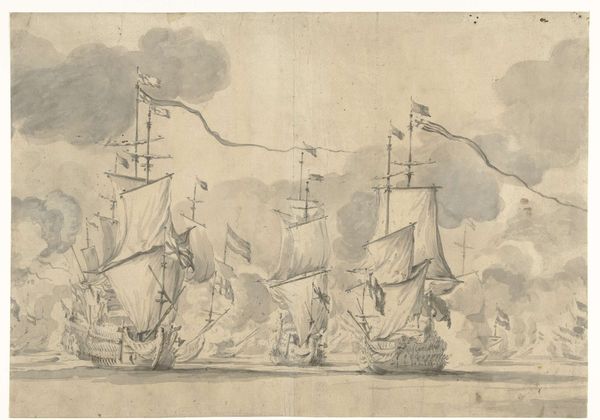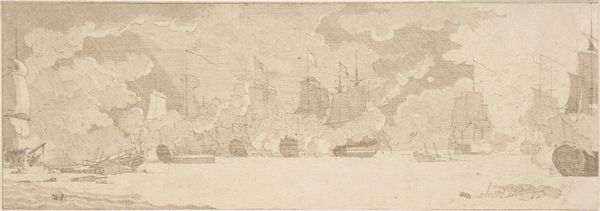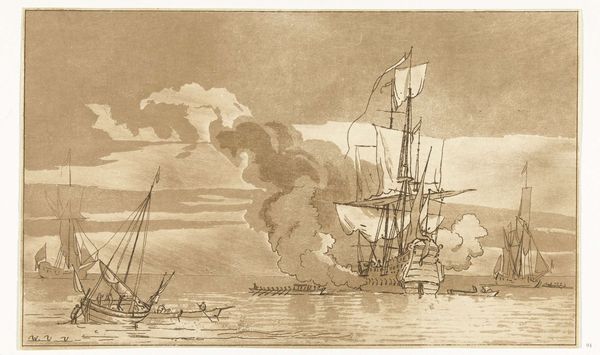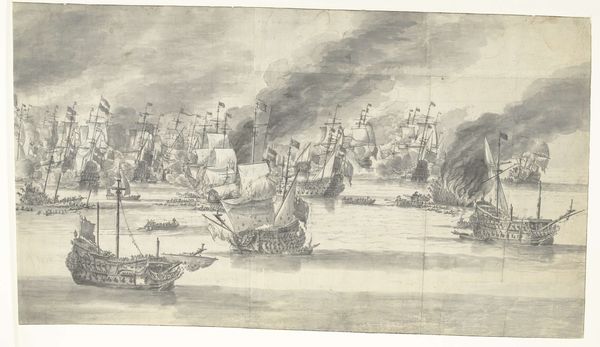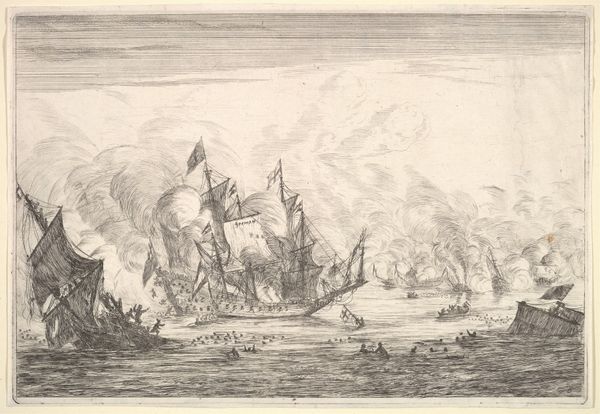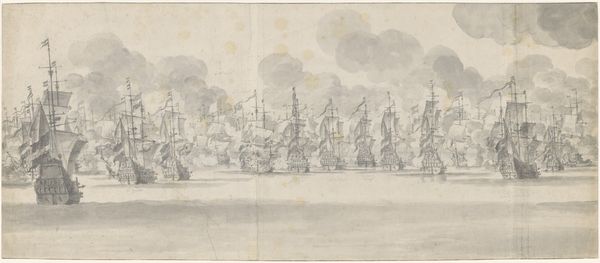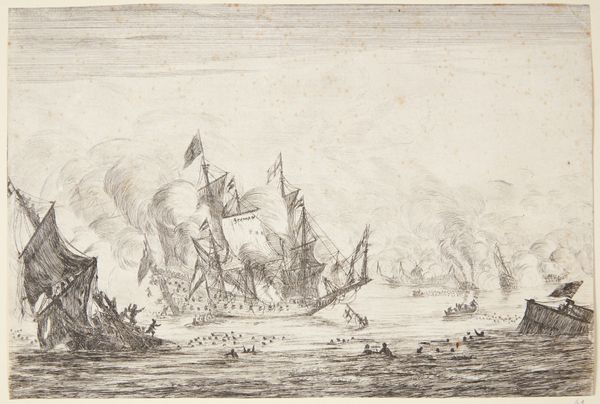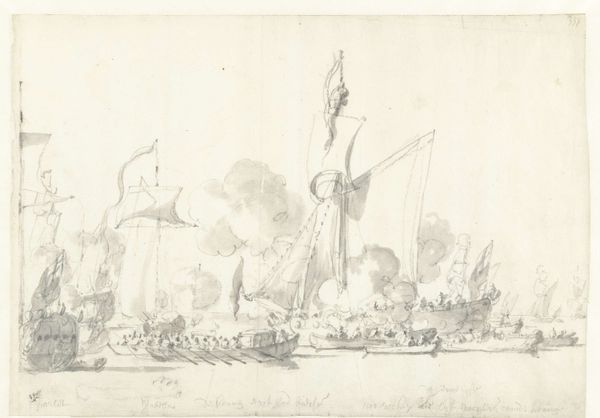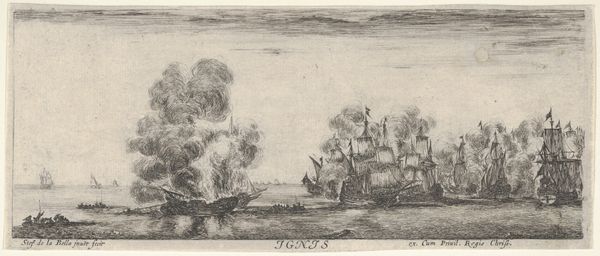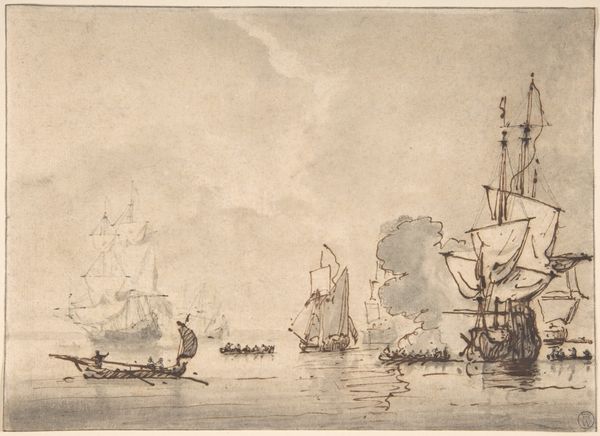
drawing, watercolor, ink
#
drawing
#
baroque
#
landscape
#
watercolor
#
ink
#
watercolour illustration
#
history-painting
#
watercolor
Dimensions: height 332 mm, width 473 mm
Copyright: Rijks Museum: Open Domain
Editor: So, this is Willem van de Velde the Elder's "The Battle of Lowestoft, 13 June 1665," created in 1665 using ink and watercolor. The tones create a muted effect and a feeling of tension between the ships in battle, though its rendering in watercolour has a strange delicacy. What can you tell us about it? Curator: Notice how the plumes of smoke dominate the scene. Smoke, across cultures and throughout time, often signifies more than just fire; it evokes ideas of transience, the ephemeral nature of power, even loss. Given that this depicts a naval battle, a moment of intense conflict and probably violence, the smoke takes on a powerful symbolic weight. Editor: It’s interesting that you focus on the smoke rather than the ships themselves. Is there a reason for that? Curator: Absolutely. Consider that maritime battles were a nexus of national pride, economic power, and technological prowess. But look at how van de Velde chooses to represent it: the event is almost swallowed by the very element it produces – a hazy cloud that obscures sharp details, individual heroics. Isn't it intriguing that he softens the visual impact of these grand war machines? The almost romantic grayscale suggests an elegy for something lost or about to be. Perhaps even commenting on the futility of these conflicts? Editor: That's not something I would have considered. Seeing it as less of a celebration of Dutch naval power and more a reflection on its cost. Curator: The cultural memory of war is always complex. Images, even seemingly straightforward depictions like this, can hold layers of meaning that shift over time and reflect society's evolving relationship with conflict and its representation. Editor: Thanks, I will never look at another naval painting the same way! Curator: My pleasure. I am glad I could expand your view.
Comments
No comments
Be the first to comment and join the conversation on the ultimate creative platform.
